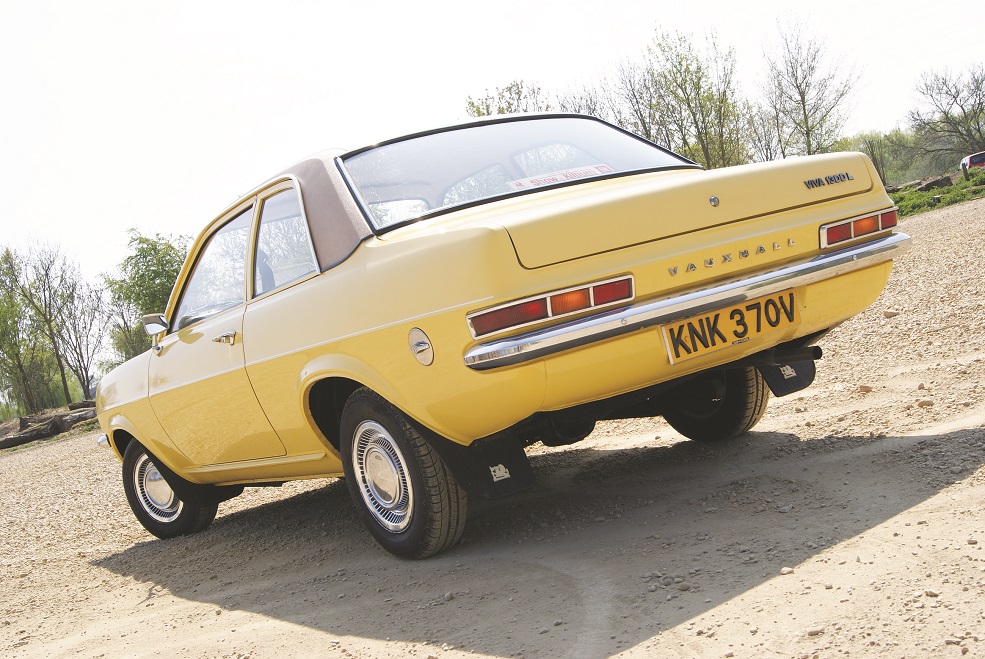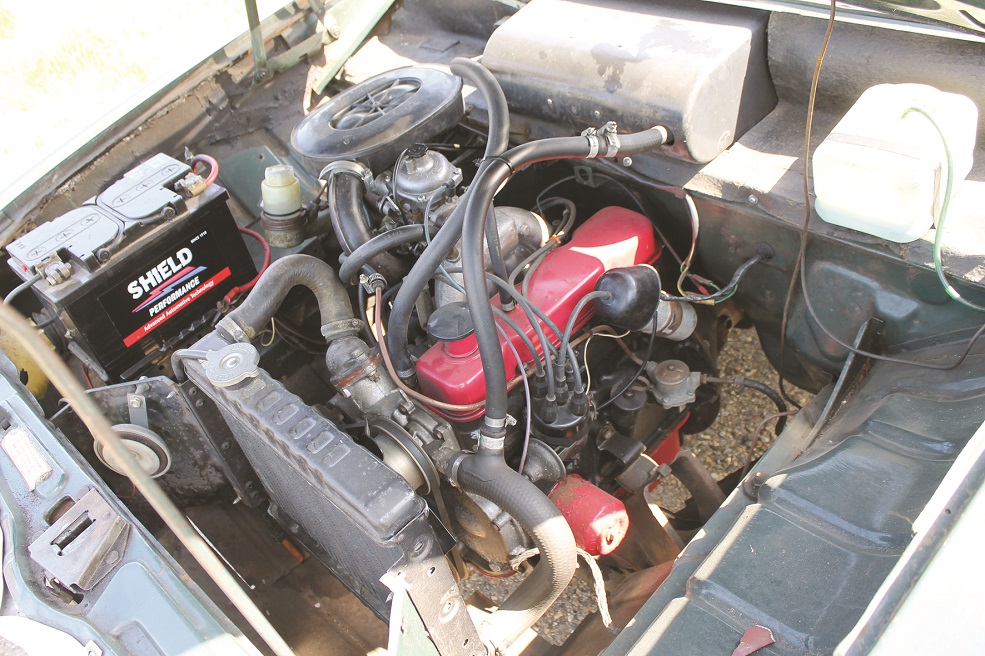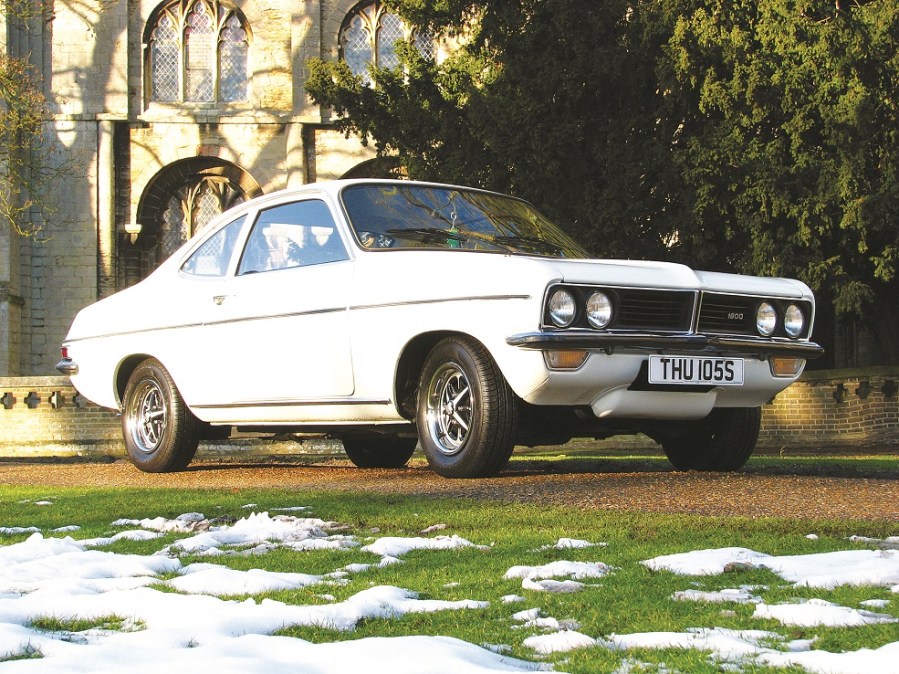The boxy looking mid-sized HA Viva launched Vauxhall into a new market sector and successors included the HB Brabham and hot Escort taunting HC ‘droop snoot’ coupé.
Built from 1963 until 1979, the Viva was GM’s effort at taking some Ford sales in the UK and overall it did pretty well, never really challenging the Escort or BMC 1100/1300 but still selling in useful numbers. It was a decent effort but like cars such as the Hunter and Avenger, it could never really challenge Ford for sales or the Marina for that matter.
The Viva was the final British designed Vauxhall – the Cavalier was a rebadged Ascona, the Chevette a Viva engined Kadett and even the FE Victor was based on the Rekord floorpan to cut costs. Whilst the HA was a funny looking thing, there were some great looking cars in the Viva range – the pretty two door HB in SL form was very well trimmed whilst the HC Coupés in Viva, Firenza and Magnum form are still head turners.
1) The HA Viva was the first car built at Vauxhall’s Ellesmere Port factory. A very basic design comparable to the Anglia, the Viva nevertheless sold 100,000 units in the first 10 months with advertising being aimed primarily at Women buyers. Great efforts had been made to ensure the controls were as light as possible and the new mid-sized Vauxhall was a popular choice with driving schools as a result.

2) Vauxhall at the time of the HA’s launch had a terrible reputation for body rot, mainly from the F Victor and PA Velox and Cresta. To solve this issue, Vauxhall put a lot of effort into making the Viva better. Still as rust prone as most other unitary cars of the time, the Viva was nevertheless a better effort and it used acrylic paint. This was a first for British built cars – Vauxhall called the finish ‘Magic Mirror’ and claimed it didn’t need polishing!
3) If the HA was a strangely bland design, the 1966 HB model was anything but. Widely regarded as one of the best looking saloons of the ‘Sixties, the coke-bottle flanked HB was not only a bit of a looker, it was much better to drive as well and arrived 18 months before the Escort. Period road tests revealed how the Viva was probably the best car in its class to drive with the new suspension set up.
4) The HB Viva was also available with a wide choice of engines and trim. The standard 1159cc unit was okay if uninspiring, but the tuned SL90 went a bit better. From 1968, the OHC slant four 1600 Victor engine was available as was the 104bhp 2.0 litre version in twin carburettor form in the new Viva GT. This version was somewhat faster than the Escort GT with its 70bhp 1300 engine….

5) In an effort to cash in on Grand Prix fame following the success of the Mini Cooper, Vauxhall tried their hand with the Brabham Viva. This was a tuning package fitted to a standard 1159cc Viva. Twin Stromberg carbs, a tubular exhaust manifold and a hotter cam gave the engine 68bhp – not a bad set up but nothing an Escort GT couldn’t deal with and the specially badged Brabham was replaced after a year by the 1600.
6) If the HB was a great looking car, the 1970 HC certainly has pundits scratching their heads. As someone once said; ‘beauty is in the eye of the beholder’ and Vauxhall dropped the Coke bottle shape just as Ford were making it popular. Mechanically similar to the HB, the 2.0 GT version was dropped and in 1971 the underpowered 1159cc engine was replaced by a 1256cc version.
7) Any complaints over the HC Viva’s styling were soon allayed by the launch of the 1971 fastback Firenza, a great name for a good-looking car. Available as a 1.2 (1156cc) or the 2.0 litre with the previous Viva GT engine, the Firenza was boosted the following year with new engines – the 1256cc OHV and the new slant four 1800 and 2300 engines lifted from the newly launched FE Victor.

8) Then we have the Magnum, launched in 1973. This was basically a well trimmed Viva two- or four-door saloon powered by the 1800 or 2300cc slant four as per the Firenza –and at this point, the Firenza was renamed Magnum Coupe with the Firenza name reserved for the 1973 Droopsnoot model. Confused yet? You will be as Vauxhall also renamed the 1256 Coupé Viva E Coupé in 1975.
9) Vauxhall’s rust problems were fairly well sorted by this point and they were no better or worse than anything else. In Canada however, a class action lawsuit against General Motors Canada due to severe and rapid corrosion led GM to withdraw the Viva from sale there in 1973. The car was known there as the Envoy Epic and marked the end of British built Vauxhalls sold in Canada.
10) The HA Viva turned out to be the longest running version of all – as a Van. Named the Bedford HA Van, it was launched in 1963 shortly after the saloon Viva and was built non stop until 1983. Only the Mini Van, built from 1960 to 1982, beat this unbroken 20-year run. The HA Van was popular because it was cheap, reliable and extremely useful – British Telecom bought thousands.

11) The Firenza droopsnoot (Firenza HP) was an attempt to reverse Vauxhalls declining image compared with Ford. Powered by a tuned 130bhp 2.3 litre slant four, the HP was a quick car capable of dispatching an RS2000 and the striking front end was styled by Wayne Cherry. Despite this, the HP wasn’t a sales hit due in part to the fuel crisis – a pity as it was a superb thing.
12) The end came in 1979 when the British built Opel Kadett rebadged as the Vauxhall Astra replaced the HC. The Magnum was discontinued in 1978 with the last FE Victors and the Coupés being dropped in 1975 and replaced by the Cavalier Coupé, itself a model based on the Opel Manta. The HC Viva was the final wholly British designed and built Vauxhall before the rebadged Opel era.







